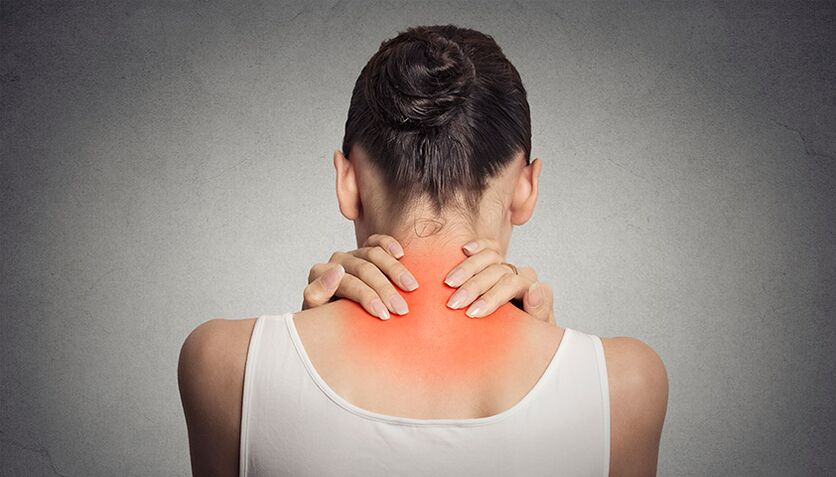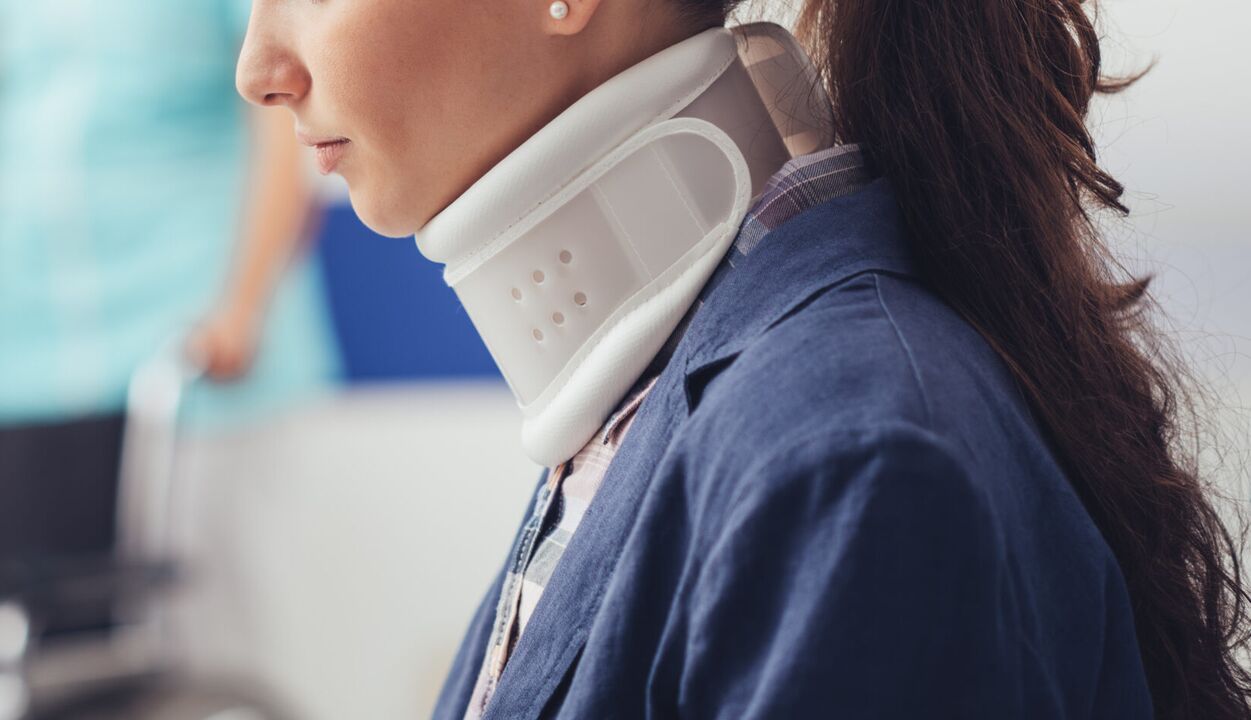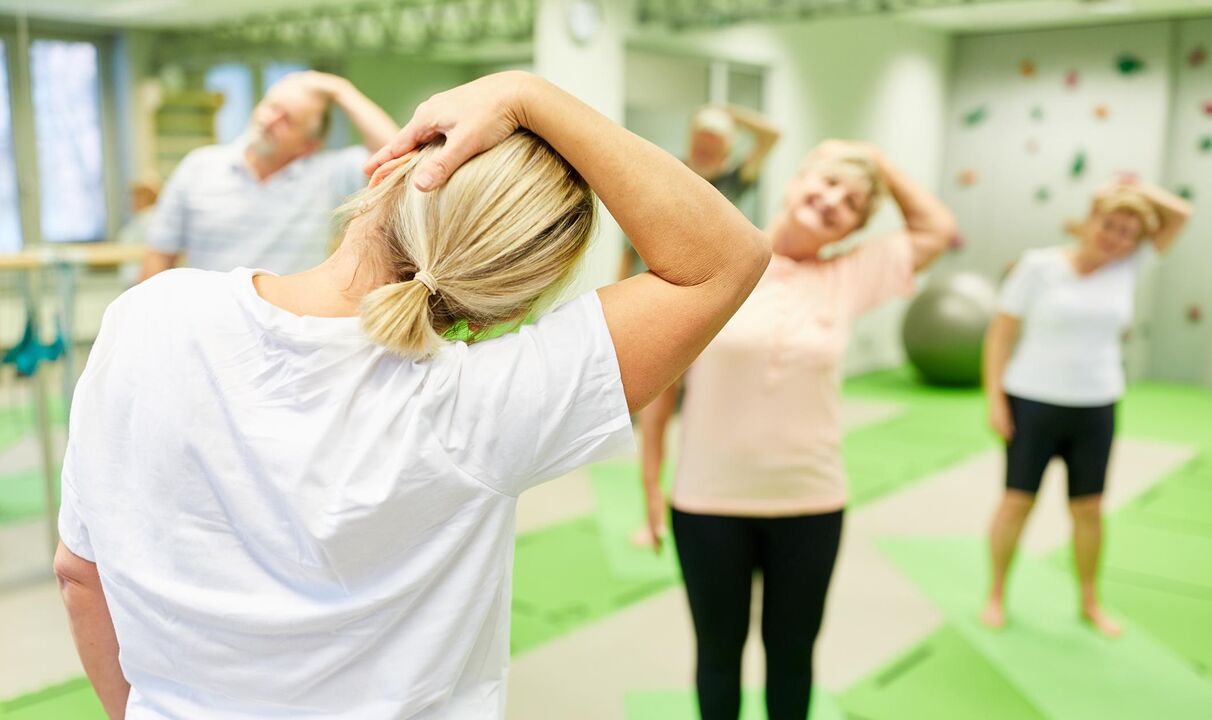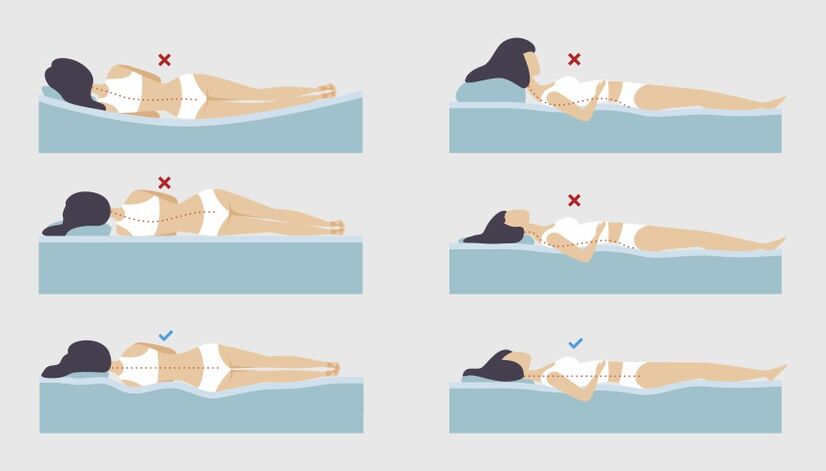
If a person complains of neck pain, a diagnosis of "cervical osteochondrosis" is often made. Some attribute it to dizziness, memory loss, numbness of the hands and other unpleasant symptoms. It is wrongly believed that the disease is associated with wear and age-related deformation of the intervertebral discs and other elements of the spine.
How does the cervical spine work?
The cervical region consists of 7 vertebrae. Among them are intervertebral discs - semi-rigid structures with a dense ring along the periphery that acts as a shock absorber and a jelly-like center. There are two joints on the right and left of each vertebra, between which the surfaces of the vertebral processes covered with cartilage protrude. Joints are connected by ligaments and back muscles.
Why does neck pain occur?
Typically, neck pain occurs in response to awkward movement, injury or inflammation of any structure of the cervical spine. In addition, the cause of pain may be excessive stretching of muscles or ligaments, for example, when lifting weights, turning the head unsuccessfully, or against the background of arthrosis of the joints between the articular processes. "Nerve entrapment" or cervical radiculopathy, specific processes (metastases, tumors of the vertebrae, membranes of the spinal cord in the cervical region) are relatively rare.
26% of men and 40% of women over the age of 30 have experienced neck pain in the past month, and 5% of men and 7% of women experience it all the time.
Acute neck pain usually resolves on its own within 1-2 weeks. Chronic pain, in most cases, appears due to lack of physical activity or, conversely, too intense training.
However, people often mistakenly call unexplained pain and discomfort in cervical cervical osteochondrosis and associate its development with wear and age-related deformation of the intervertebral discs and other elements of the spine. But such pain, as a rule, has nothing to do with real osteochondrosis.
Cervical osteochondrosis
According to the International Classification of Diseases (ICD), osteochondrosis (osteochondropathy) is a group of rare hereditary diseases associated with disruption of the normal development and growth of bones. As a rule, osteochondrosis begins in childhood and is severe: a joint or part of a bone is deformed, sometimes even dies. With this disease, the thoracic spine (lower thoracic vertebrae) is most often affected, not the cervical spine. Thus, the main clinical manifestation of osteochondrosis is an open curvature of the thoracic spine, called thoracic kyphosis.
Symptoms associated with thoracic spine injury:
- shortness of breath,
- constant weakness
- inability to breathe fully,
- pain and burning behind the sternum,
- rapid heartbeat attacks.
Conditions accompanying neck pain
Cervical spondylosis
Neck pain in people over 50 is usually caused by cervical spondylosis, age-related wear and tear of the vertebrae and related structures. With this disease, the intervertebral discs become dehydrated and flattened, causing deterioration of cushioning in the cervical region, and many movements are accompanied by pain.

However, changes in the spine are normal as we age. So, on average, its structures begin to wear out after 30 years, and by the age of 60, 9 out of 10 people have cervical spondylosis. However, most people are asymptomatic.
Other reasons
In rare cases, neck pain occurs due to hypothermia or severe stress, herniated discs or anomalies of the cervical vertebrae - bone growths (spurs) that compress the nerves extending from the spinal cord.
The most common source of pain in the cervical spine and shoulder girdle is excessive tension (defense) of the muscles: trapezius, long back muscles of the cervical spine.
In addition, the muscles of the cervical spine are closely connected to the aponeurosis - a wide tendon plate that covers the head. In the occipital, temporal and frontal regions, the muscle elements of the aponeurosis connect with the muscles of the cervical region, so neck pain is often accompanied by a headache. Thus, neck pain, which appears after a long period of sedentary work or sleeping in an uncomfortable position and is combined with a headache, is in most cases associated with a lack of physical activity and wrong posture and is not dangerous to health.
The phenomenon of the Internet era, called techno-neck or technological neck, is associated with pain caused by an uncomfortable posture. Techneck is the result of constant use of computers and smartphones, due to which a person has to bend his neck. The fact is that the relative mass of the head increases with forward tilt. Thus, the average weight of an adult's head in the "straight" position is 5 kg. If you tilt your head forward at least 15°, the load on the neck muscles will be 13 kg, 30° - 20 kg, 60° - 30 kg. As a result of constant overload, the neck muscles are overstressed, microtraumas, inflammations, fibrosis (overgrowth of connective tissue) and, accordingly, pain can occur.

Causes contributing to the development of degenerative changes in the cervical spine
Cervical spine pain is caused by childbirth or any other injuries of the spine, anomalies of its development, posture disorders, muscle dystonia, as well as long-term immobilization, obesity and some autoimmune diseases.
- Long-term immobilization is a situation in which a person is forced to lie down for more than a month due to an underlying disease. As a result, the muscles are weakened - and during verticalization, when the load on them increases, they are overstretched. Pain arises.
- Obesity: Excess body weight increases stress on spinal structures and can cause pain.
- Autoimmune diseases in which cartilage tissue is destroyed (autoimmune arthritis, polychondritis) also cause neck pain.
Stages of degenerative changes in the cervical spine
There are 4 main stages of cervical spine degeneration (destruction):
- Stage I: the intervertebral discs become thinner, there is slight discomfort in the neck area;
- Stage II: the intervertebral discs are deformed, the distance between the vertebrae decreases. Pain increases with movements of the cervical spine;
- III stage: cartilage and vertebrae rub against each other, neck pain is constant, movements are limited. With very severe deformations of the cervical spine, vertebral artery syndrome can occur with visual and vestibular disorders, headache;
- IV stage: degenerative changes are pronounced, movements in the cervical spine are very limited and painful. The neck area can be almost completely immobilized.
Symptoms of degenerative changes in the cervical spine
Most people with cervical osteochondrosis experience chronic aching pain and neck stiffness. As the disease progresses, other symptoms may appear (especially if the spinal roots, vertebral artery, and adjacent nerve plexuses are compressed).
Symptoms of degenerative changes in the cervical spine:
- neck pain that worsens with movement or standing;
- the pain spreads to the shoulder or arm;
- numbness, tingling and weakness in arms and hands;
- clicking or grinding in the neck (especially when turning the head);
- Headache;
- dizziness attacks;
- violation of coordination of movements;
- loss of bladder or bowel control.
If such symptoms appear, you should consult a neurologist as soon as possible.
types of symptoms of "cervical osteochondrosis".
All symptoms of cervical osteochondrosis can be conditionally classified into 3 groups or syndromes: vertebral, radicular and vertebral artery syndrome.
Symptoms of vertebral (spinal) syndrome:
- creaking in the neck when moving;
- limited mobility;
- violation of the position of the vertebrae in the neck relative to each other;
- smoothing of the natural cervical lordosis or lateral curvature of the cervical spine (can only be seen on X-ray, MRI or CT).
Symptoms of radicular syndrome:
- numbness of the fingers of one or both hands;
- fever, burning pain in neck, radiation to arm or both arms;
- dystrophy of the muscles of the neck and arms.
Symptoms of vertebral artery syndrome:
- paroxysmal dizziness, until fainting;
- sudden jumps in blood pressure;
- noise in the ears;
- blurred vision or spots in the eyes;
- loss of balance and nausea attacks when moving the head;
- headache (severe pain on one side or both sides).
Diagnosis of degenerative changes in the cervical spine
In order to understand the cause of neck pain and diagnose "degenerative changes in the cervical spine" (commonly called cervical osteochondrosis), the doctor must conduct an examination, study the medical history, evaluate the results of laboratory tests and instrumental examinations. .
Diagnosis and treatment of cervical osteochondrosis is carried out by a neurologist.
Examination
During the examination, the doctor will listen to the patient's complaints, clarify the details of his medical history and conduct an examination: he will check reflexes, muscle strength, sensitivity and the state of the vestibular apparatus.
Areas of muscle atrophy (muscle loss) visible during "cervical osteochondrosis" in the neck area, decreased or increased muscle tone of the long back muscles, and static disorders in the neck area can be observed. When palpating the muscles, a person complains of pain, when bending the head, the pain may spread to the head or arms, there may be dizziness or headache.
In addition, patients may have motor disorders (weakness) in the hands, vision and hearing problems.
The doctor may also ask the patient to walk, stand on one leg with their eyes closed, or touch their nose. Thus, the specialist will be able to assess whether the coordination of movements is disturbed, whether there are problems in gross and fine motor skills.
Laboratory diagnostics
To assess the general condition of bones, blood tests for total and ionized calcium, as well as markers of bone tissue growth and destruction - osteocalcin and osteoprotegerin, alkaline phosphatase are prescribed to patients suspected of cervical osteochondrosis.
With progressive cervical osteochondrosis, the joints are destroyed, the amount of calcium may decrease, while osteocalcin and osteoprotegerin may, on the contrary, increase.
Total creatine kinase is also considered an indicator of muscle tissue destruction in cervical myositis.
In addition, the doctor may need to assess the blood level of trace elements involved in the regulation of muscle tone: magnesium, potassium, sodium.
Instrumental diagnostics
To determine the cause of neck pain and related disorders, imaging studies are necessary: X-ray of the cervical spine, computed tomography and magnetic resonance imaging, electroneuromyography.
- Radiography.Using X-rays, you can identify bone deformities, malignant tumors and degenerative changes in the joints.
- Computed and magnetic resonance imagingIt is performed when there is a suspicion of pathology of the spine, spinal cord or brain. Computed tomography shows spinal hemangiomas and gross spinal deformities. Magnetic resonance imaging is more informative for visualizing muscles, roots, and the spinal cord.
- Electroneuromyography- a method of studying the efficiency of impulse transmission along a nerve fiber using a low-intensity electric current. The test can be a little uncomfortable. The study helps to clarify the transmission of impulses from the roots, nerves and nerves to the muscles, to confirm nerve or muscle damage and to clarify the nature and extent of the damage.
Treatment of degenerative changes in the cervical spine
The main goals of treating degenerative changes in the cervical spine are to relieve pain, prevent compression of nerves in the neck, and restore neck mobility.

Depending on the severity of the condition, the doctor may prescribe medication, physiotherapy or massage. If nerves are compressed or joints are deformed, surgery may be required.
Drug treatment of degenerative changes in the cervical spine
Neck pain can be relieved with medication.
Medicines that relieve neck pain and stiffness:
- local anesthetic ointments, gels and patches;
- non-steroidal anti-inflammatory drugs;
- hormonal drugs in the form of tablets or injections into the affected joint area;
- muscle relaxants to relieve muscle spasms;
- antidepressants to relieve chronic pain.
Drug-free treatment of cervical osteochondrosis
In addition to drug therapy, neck exercises are important for patients with neck osteochondrosis. For this purpose, the person is sent to a physiotherapist for consultation. It teaches how to properly stretch and strengthen the muscles of the neck and shoulders.
Your doctor may recommend mattresses or rolls with metal or plastic needles. They are used 15-30 minutes before going to bed to relax the muscles.
Wearing a Shantz splint (neck brace) is a passive exercise therapy for deep neck muscles that are difficult to influence with exercise. When a person puts on a splint, the muscles relax, and when they take it off, they tense up. If you wear splints for 15-20 minutes several times a day, you can train and strengthen them.
If you have serious neck injuries, it only makes sense to wear it for 2-3 hours. In addition, you need to sleep less.
Surgical treatment of degenerative changes in the cervical spine
As a rule, for patients with severe deformation of the spine with a compressed nerve, surgery is required.
During the operation, the surgeon removes pathological elements (ruptured protrusions, formations, etc. ) or a part of the vertebra. After such treatment, long-term rehabilitation is required: wearing a Shants splint or hard splint for the cervical spine, physiotherapy, regular walking, painkillers.
Complications and consequences of degenerative changes in the cervical spine
Without treatment, the intervertebral discs gradually wear out and the vertebrae "disappear".
Common complications of degenerative changes in the cervical spine:
- syndrome of unbearable pain in the head, neck, chest;
- cramps, movement disorders and numbness of the hands;
- frequent dizziness, impaired coordination of movements, fine and gross motor skills.
Prevention of degenerative changes in the cervical spine ("cervical osteochondrosis")
There is no specific prevention of true cervical osteochondrosis because it is a hereditary disease.
In order to avoid the appearance of non-specific neck pain mistakenly associated with cervical osteochondrosis, it is important to maintain the correct posture and be physically active: the more a person moves, the better the condition of muscles, bones, ligaments and joints.
Adults need 150 minutes of moderate-intensity aerobic activity per week to maintain physical activity. Brisk walking, swimming, cycling, tennis, dancing or rollerblading are suitable. Pilates and yoga will help strengthen your muscles.
In addition, gymnastics helps to avoid overstraining the neck muscles and the appearance of pain: bending the head forward, back, alternately to each shoulder and rotating it, as well as sleeping on an orthopedic pillow.
You should avoid injury to the cervical spine: do not jump into the water upside down, wear seat belts in the car (prevention of whiplash injury during an accident).

Sleeping position for back pain
Pain in the neck and back, often attributed to osteochondrosis, can be the result of an uncomfortable sleeping position.
During sleep, the head and spine should be approximately at the same level. This position minimizes additional pressure on the neck.

If a person mainly sleeps on his back, the height of the pillow should be on average 6-11 cm. For side sleepers, the pillow should be thicker: 9-13 cm. So it will be the desired angle. should be kept between the shoulder and the head, the cervical spine will not bend and the muscles will tense to compensate for the discomfort.
Moreover, the greater the weight of the person, the higher the pillow should be. You should also pay attention to the hardness of the mattress. The softer it is, the more it will sag under the weight of the body, and the pillow should be higher. In addition, it is better not to always sleep on only one side - this leads to muscle imbalance.
If a person prefers to sleep on his stomach, he may suffer from back and neck pain more often. The fact is that it is difficult to keep the spine in a neutral position in this position. To relieve tension in your back, you can place a pillow under your pelvis and lower abdomen, choose a flat pillow under your head, or even sleep without a pillow.
In addition, you can use a special orthopedic pillow.
Frequently asked questions
- Where can pain spread from "cervical osteochondrosis"?
Pain caused by degenerative changes of the cervical spine may radiate to the shoulder or arm, and may be aggravated by movement or standing.
- How to eliminate an attack of dizziness with "cervical osteochondrosis"?
To eliminate an attack of dizziness, you should take a comfortable position where the probability of falling is minimal (sit or lie down in a chair with back support) and call for help. After 5-7 minutes, you can try to turn your head: most likely, the dizziness attack will pass during this time. If dizziness persists or worsens, nausea, vomiting, or other neurological symptoms (speech, vision, movement, swallowing, sensitivity) appear, you should call an emergency room as soon as possible.
- How to sleep properly with "cervical osteochondrosis"?
During sleep, the head and spine should be approximately at the same level. This position minimizes additional pressure on the neck.
- How long does the exacerbation of "osteochondrosis" of the cervical spine last?
On average, exacerbation of symptoms due to degenerative changes in the cervical spine ("cervical osteochondrosis") lasts between 4 and 7 days. Nonsteroidal anti-inflammatory drugs and muscle relaxants are used to reduce pain. During this time, it is better for a person to remain calm and wear a necklace.
- Which doctor treats "osteochondrosis" of the cervical spine?
Diagnosis and treatment of pain in the cervical region is carried out by a neurologist, neurosurgeon, orthopedist and general practitioner.















































